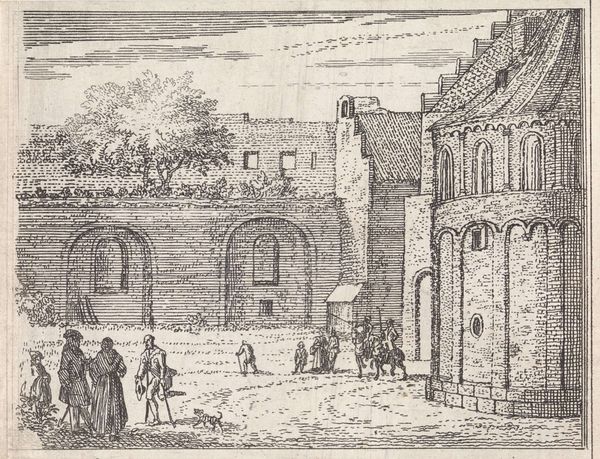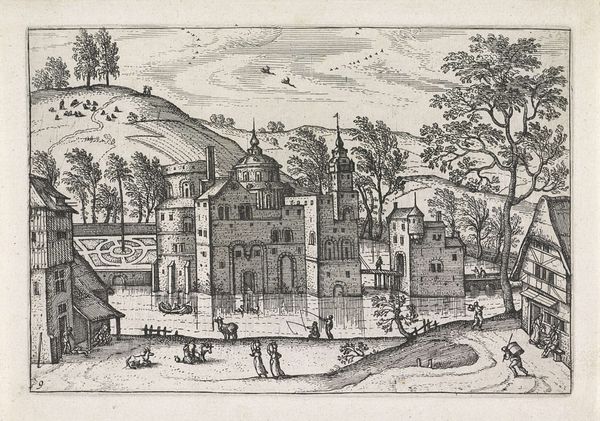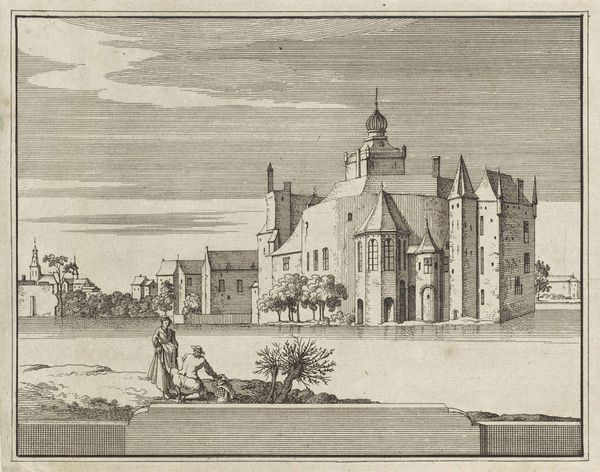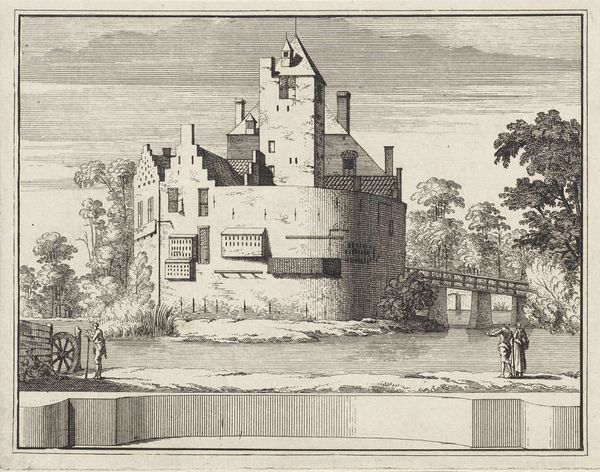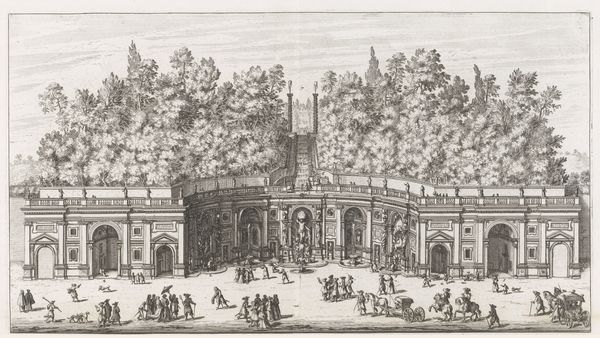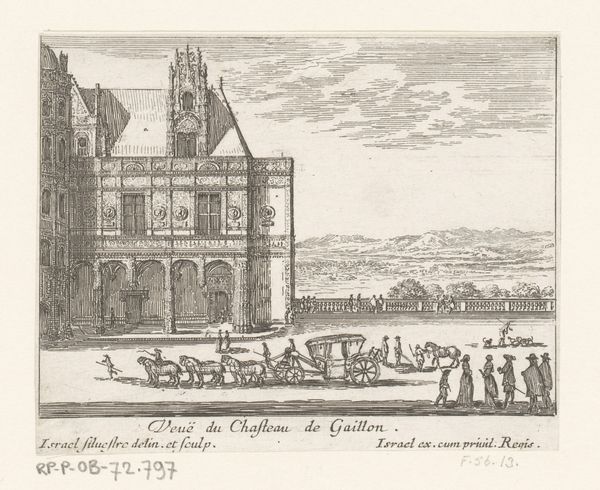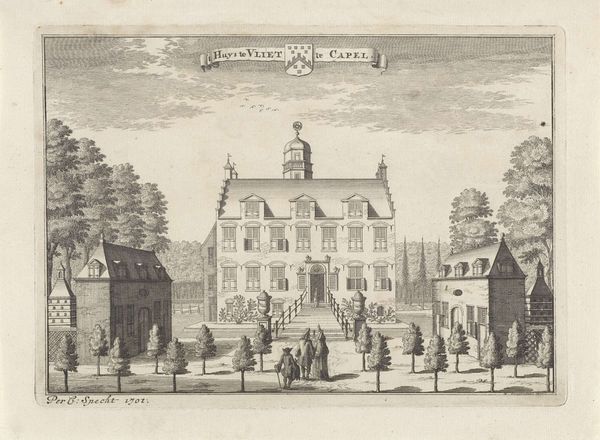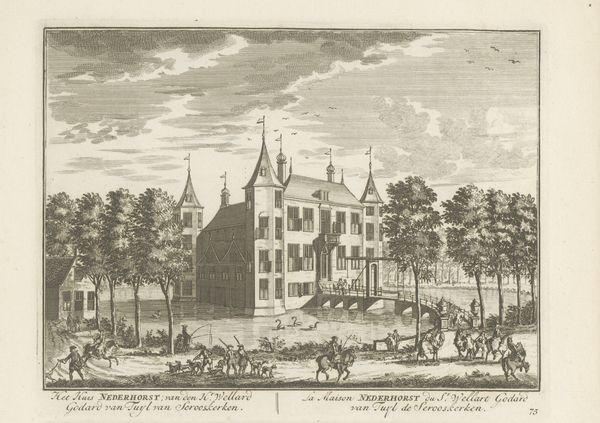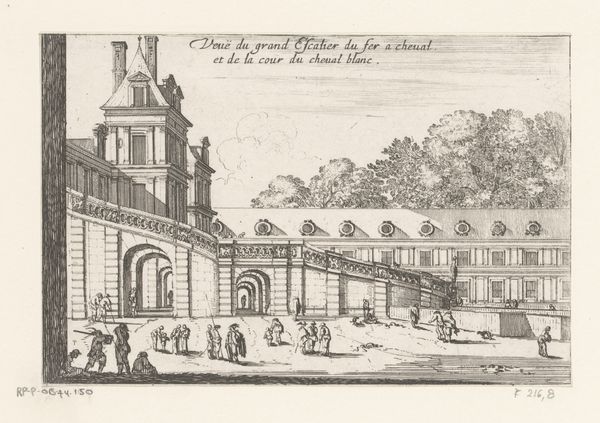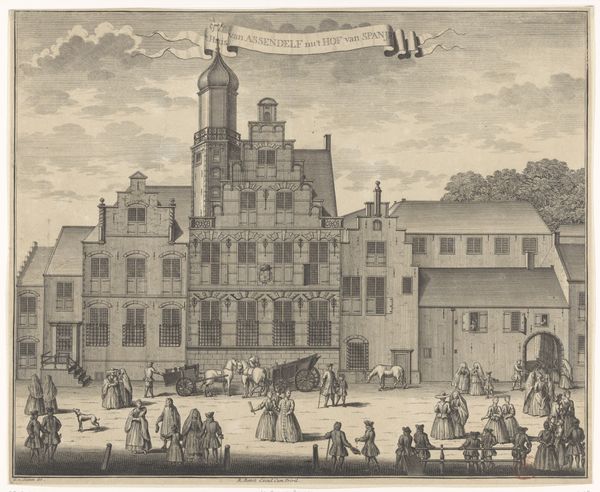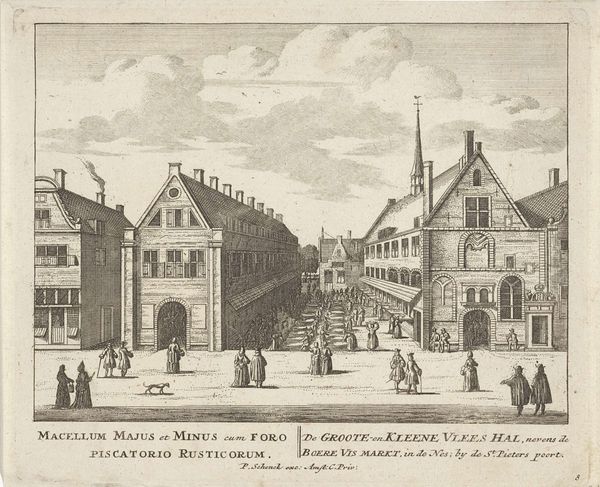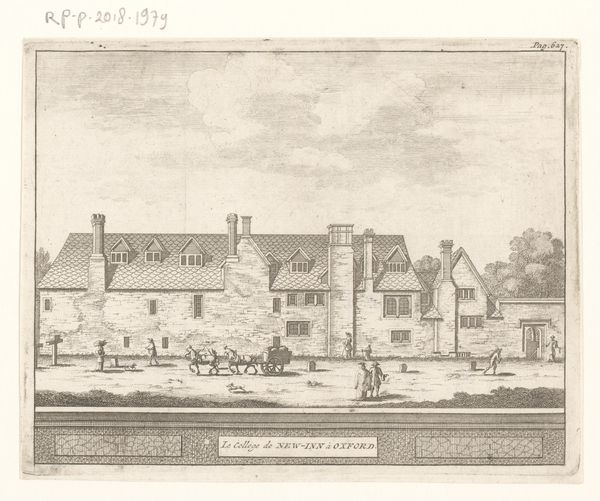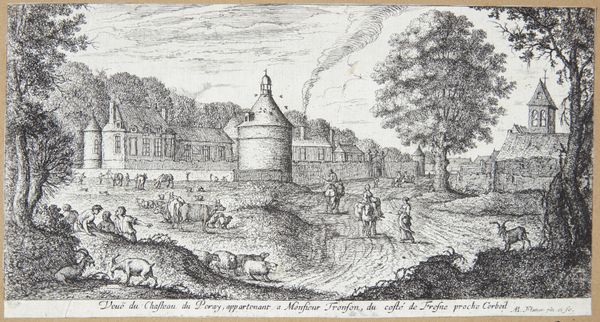
print, engraving
#
baroque
# print
#
line
#
cityscape
#
engraving
Dimensions: height 63 mm, width 82 mm
Copyright: Rijks Museum: Open Domain
Editor: So, this is Abraham Zeeman's "Ingang van de tuinen van Kleef," from 1730, an engraving that captures a cityscape. It feels very precise and deliberate, especially with all the intricate linework. What catches your eye when you look at this print? Curator: I’m drawn to the socio-economic dimensions evident in the engraving process itself. Think about the labour involved in creating these intricate lines. It's not just artistic skill, but also a system of workshops, apprentices, and the market for prints like these. Who was buying them, and what did they signify about the consumer’s own status and aspirations? The choice of engraving also speaks to its reproducibility and accessibility compared to painting, making it a commodity circulated within specific social circles. Editor: That's fascinating! I hadn't considered the economics of printmaking. How does the actual location—the entrance to these gardens—play into this materialist reading? Curator: Well, the gardens themselves were likely meticulously designed and maintained, requiring a workforce for upkeep and construction. So, this image isn’t just a representation of a place, but a snapshot of the social hierarchy embedded in the land itself. The act of representing this scene via print also allows wider circulation of this image of power and constructed luxury, for the consumption of both elites and potentially a rising middle class. What do you notice about the figures within the print? Editor: Some figures look well-dressed while others appear to be laborers. Perhaps the artist uses the city-gate setting as a stage for contrasting lifestyles within a capitalist system? Curator: Exactly. It’s about understanding art as a product of social and material forces, a perspective that pushes beyond merely admiring the aesthetics. Editor: I never thought about art analysis this way. This changes my perspective on not just the artwork, but the artist too. Curator: That’s the key takeaway: art as the end result of human production. A mirror, or even a lens, into the labor, and lives of everyday society.
Comments
No comments
Be the first to comment and join the conversation on the ultimate creative platform.
